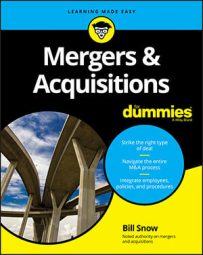Before an M&A deal can close, Buyer has to do due diligence. This means that Seller must provide the volume of company information necessary. To get to the closing table faster, the Seller should be prepared to provide the information immediately following the signing of the M&A Letter of Intent (LOI).
One area that the Buyer will need information about is human resources. Here is a comprehensive list of the kinds of things that a Seller will need to provide to the Buyer about human resources.
Organizational chart by department showing all positions within the department. All open positions should be noted as such.
Listing of employees including hire date, job title/position, job description, and current pay rate.
Copies of all employment, consulting, non-disclosure, non-solicitation, or noncompetition agreements between the company and any of its employees.
Résumés of key employees.
Summary and copies of executive compensation plans, including salaries, bonuses, commissions, vacations, club memberships, and so on.
Copy of the company’s employee handbook, including all employee benefits and holiday, vacation, and paid time off policies.
Copies of all documentation for qualified and nonqualified retirement plans; any IRS determination letters; the most recent Form 5500, 5500-C, or 5500-K; and for each multiemployer plan, a statement of the employer’s “withdrawal liability” within the meaning of ERISA section 4211.
Copies of collective bargaining agreements.
Listing and description of benefits of all employee health and welfare insurance policies or self-funded arrangements.
Schedule of costs associated with the aforementioned plans during the reporting period.
Summary of all employee problems within the reporting period, including alleged wrongful termination, harassment, and discrimination.
Summary of any labor disputes, requests for arbitration, or grievance procedures currently pending or settled within the reporting period.
Listing of company-provided vehicles, including individual assigned to the vehicle.
Schedule of worker’s compensation claim history for the reporting period.
Schedule of unemployment insurance claim history for the reporting period.
Copies of all stock option and stock purchase plans and a schedule of grants.
Copies of all OSHA examinations, reports, or complaints during the reporting period.
Copies of all policy and/or procedure manuals.
Description of all performance bonus plans in place and listing of bonuses paid during the reporting period.

